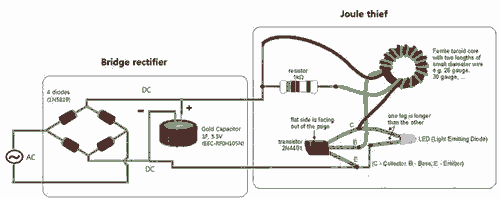
Mock Flasher LED Circuit

This simple mock flasher LED simulates the indicator of a sophisticated alarm system. It can be placed in doors, gates, and vehicles to confuse intruders.
The mock flasher LED circuit is designed to mimic the flashing behavior of a typical alarm system indicator light. The primary components of this circuit include a light-emitting diode (LED), a resistor, a capacitor, and a transistor. The LED serves as the visible indicator, while the resistor limits the current flowing through the LED to prevent damage. The capacitor, in conjunction with a resistor, is used to create a time delay, allowing the LED to flash at a predetermined rate.
The circuit operates on a low-voltage DC power supply, typically ranging from 5V to 12V. When powered, the capacitor begins to charge through the resistor. Once the voltage across the capacitor reaches a certain threshold, it triggers the transistor, allowing current to flow through the LED, causing it to illuminate. As the capacitor discharges, the voltage drops, turning off the transistor and extinguishing the LED. This cycle repeats, resulting in a flashing effect.
To enhance the effectiveness of the mock flasher, the flashing rate can be adjusted by changing the values of the resistor and capacitor. A larger capacitor or resistor will result in a slower flashing rate, while smaller values will increase the frequency of the flashes. This flexibility allows for customization to suit various applications, making it suitable for use in different environments, such as residential properties, commercial buildings, and vehicles.
In summary, the mock flasher LED circuit is a simple yet effective solution for simulating an alarm system indicator, providing a practical deterrent against potential intruders.This simple Mock Flasher LED simulates the indicator of a sophisticated Alarm system. It can be placed in doors, gates and vehicles to confuse intruders. T.. 🔗 External reference
The mock flasher LED circuit is designed to mimic the flashing behavior of a typical alarm system indicator light. The primary components of this circuit include a light-emitting diode (LED), a resistor, a capacitor, and a transistor. The LED serves as the visible indicator, while the resistor limits the current flowing through the LED to prevent damage. The capacitor, in conjunction with a resistor, is used to create a time delay, allowing the LED to flash at a predetermined rate.
The circuit operates on a low-voltage DC power supply, typically ranging from 5V to 12V. When powered, the capacitor begins to charge through the resistor. Once the voltage across the capacitor reaches a certain threshold, it triggers the transistor, allowing current to flow through the LED, causing it to illuminate. As the capacitor discharges, the voltage drops, turning off the transistor and extinguishing the LED. This cycle repeats, resulting in a flashing effect.
To enhance the effectiveness of the mock flasher, the flashing rate can be adjusted by changing the values of the resistor and capacitor. A larger capacitor or resistor will result in a slower flashing rate, while smaller values will increase the frequency of the flashes. This flexibility allows for customization to suit various applications, making it suitable for use in different environments, such as residential properties, commercial buildings, and vehicles.
In summary, the mock flasher LED circuit is a simple yet effective solution for simulating an alarm system indicator, providing a practical deterrent against potential intruders.This simple Mock Flasher LED simulates the indicator of a sophisticated Alarm system. It can be placed in doors, gates and vehicles to confuse intruders. T.. 🔗 External reference





